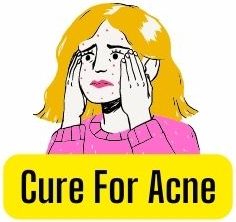
So, you want to know what happens to the pus inside of a pimple if you don”t pop it? Read this article to find out more about the symptoms and causes of acne. In addition, you’ll learn how to treat it safely. For instance, ice cubes are excellent ways to relieve the swollen area. Here are some tips for safely draining pimples.
Symptoms
If you’ve ever had a zit, you know that it’s usually at the worst possible time. Before big events, family reunions, and dates with your friends, you’ve probably had the experience of dealing with an unpleasant breakout. Dermatologist Zakiya Rice, assistant professor at Emory University School of Medicine, agrees that this is never a good time to get a zit.
Fortunately, there are many methods to treat a pimple without popping it. To treat it at home, you can put a straight pin over it and use it to pierce it. You can use a lighter or match to sterilize the pin, then wipe the swab clean with rubbing alcohol before pricking the zit. Once you’ve pierced the white center of the zit with the pin, you’ll be able to remove the zit.
The most common type of pimple is a pustule, a small red bump with a yellow center. Popping a pustule will release a white or yellow-colored substance, called pus. Other types of pimples include blackheads, whiteheads, and papules. Papules may be hard or closed. Cysts, which are filled with pus, can become a chronic problem. They may lead to scarring or even cancer if they’re left untreated.
If you don’t want to pop a pimple, you may want to consult with a dermatologist. Not only can they prescribe prescription treatments, but they can help you manage your acne symptoms. If you’re concerned about a pimple, you can schedule a consultation at Dermatology Center of Northwest Houston. They’ll diagnose your acne and recommend a course of treatment based on the results of the skin exam.
Causes
What causes pus in a pimple not to pop? A pimple with pus is generally caused by bacteria that lives in the skin’s pores. Those bacteria can be difficult to kill with your regular cleanser and may need to be inactivated with a prescription retinoid. Luckily, there are several over-the-counter options available. Some of these treatments work by killing bacteria within the pimple while others simply bleach your clothing.
When a pimple fails to pop, the carrier fluid (which is the liquid that fills the space inside the pimple) begins to swell and form pus. Popping a pimple will cause this fluid to escape from the pimple and may cause the infection. A pimple that isn’t popping can also contain blackheads or whiteheads, or excess sebum.
If you can’t get rid of the pus, you’re most likely suffering from inflammatory acne. This type of acne typically results in pustules, papules, nodules, or cysts. During an outbreak, pus will be visible on the skin’s surface and may cause scarring. Fortunately, you can prevent this problem by taking care of your skin gently. Scrubbing can actually worsen the outbreak, and it may be necessary to use exfoliating products to improve your skin’s surface.
A pimple with pus is not easy to pop. While it might be satisfying to pop it, squeezing it can actually push the pus deeper into the follicle. Not only does this cause the pimple to take longer to heal, but it can also irritate the surrounding skin, which can result in a more inflamed appearance. Additionally, you’ll likely leave scarring after the pimple is popped, which will require special treatments.
Treatment
Before you decide to try popping a pimple that has pus inside, you should first know what you are dealing with. First, you need to make sure that you have a firm pimple with a near-surface pus. Once this condition is met, wash your hands thoroughly with a disinfectant soap. Another option is to disinfect the needle by using 70% alcohol. Using the same disinfectant, you should also sterilise the needle by heating it over an open flame.
Another option is to use a warm compress. Warm compresses may help drain the pus. Also, you can apply benzoyl peroxide to the affected area. This product helps to kill bacteria that cause pimples to form. While you’re at it, try not to touch the pimple or apply makeup while it’s open. If the pain persists, you may need to wait for a longer time.
The odorless benzoyl peroxide is another option that can help to relieve the pain and inflammation. This treatment will kill bacteria and disinfect the pores. It is also effective at removing prescription retinoids. However, beware: benzoyl peroxide is highly irritating to the skin and can bleach fabrics. If you can’t wait that long, go to a dermatologist for advice.
While the odorless blood from a popped pimple should not cause concern, you should be aware of the fact that it will drain out once the pus disappears. It should also be noted that whiteheads and blackheads can look like pus as well. This could be caused by excess sebum. A dermatologist can provide you with a solution that will help your skin look its best.
Relieving swollen area with ice cubes
You can use ice to help relieve swelling from a swollen area by applying it directly to the skin. However, it is best to avoid applying ice to the skin over a long period of time. In addition, ice can damage the skin and cause frostbite. Also, it may cause bleeding if left on the skin for too long. It is advisable to use a cloth towel to protect the affected area and avoid using ice on areas with little muscle and fat.
If you have been injured in an accident, you can use ice as a pain relief remedy. You can place the ice cube on the area and leave it for about ten to twenty minutes. You can repeat the ice application every two hours or whenever it feels better. However, you should not apply ice to your face or neck, as this may cause a rash or worse.
Inflammation is the body’s natural response to injury. Swollen tissue contains healing components that can ease pain. However, when it is painful, the pressure of swollen tissues can cause discomfort. You can use ice to reduce swelling quickly and easily. This treatment can be done at home with extra ice that you may already have. If you are unable to go to the store, you can purchase ice cubes at the supermarket.
You can also use an ice pack or an ice bath to reduce swelling. Both ice therapy and ice baths are effective methods for relieving swelling of peripheral joints. However, ice massage has a significant effect on localized inflammation. You should not use ice on open wounds. The ice treatment should be limited to 20 to 30 minutes and should be repeated frequently.
Sterilizing a needle to remove pus from a pimple
When attempting to get rid of a pimple, you should always sterilize a needle before attempting to pop it. This step is crucial to avoid spreading bacteria to your other body parts. After sterilizing a needle, it is time to lance the pimple. You can use a needle made from stainless steel by running it through a flame or wiping it with isopropyl alcohol. After lancing, you should gently pull out the pus, and then wipe away any excess.
To begin, make sure to start with clean hands and a clean face. You should use a warm washcloth to soften the skin around the pimple. Once the skin is softened, use a thin needle with a sharp point. You can also use a hand sewing needle, such as the Singer Assorted Hand Needles. You should also sterilize the needle by rubbing it in a sterilizer.
To remove pus from a pimple, wait until the pimple has a white head, indicating that it is ready to be treated. After using a cotton swab or a cotton pad, make sure to wash your hands thoroughly with disinfectant soap. You can also apply rubbing alcohol to the blemish before piercing it. The alcohol will help the pus to drain out without pushing the infected matter deeper into the skin.
If you need to inject a needle to remove pus from a splinter, make sure to clean it thoroughly with rubbing alcohol before using it. Alcohol can help disinfect the needle, but it is not sterile. Also, alcohol can cause skin damage if you use it to inject pus. In addition, alcohol can promote bacterial growth. The CDC recommends rubbing alcohol only for medical needles.





